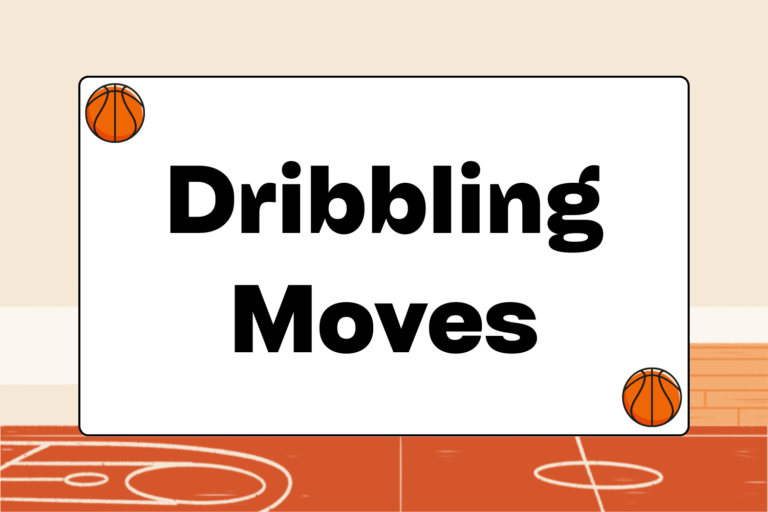On the morning of December 21, 1891, Dr. James Naismith emerged from his office with a clear vision and a new sense of purpose. He had just spent two weeks searching for an indoor athletic activity to occupy his rowdy physical education class during the harsh New England winter months. Needless to say, his class (most of whom were ex-football and rugby players) hardly found the winter athletic regimen of leapfrog and tumbling to be an acceptable replacement for outdoor sports.
Naismith turned first to the popular sports of the day—he tried indoor adaptations of soccer, lacrosse, and football, but each only led to people getting injured or facility damage. Disappointed when he couldn’t find a sport that met all the conditions, Naismith decided to invent one of his own.
He would later say, “The invention of basketball was not an accident. It was developed to meet a need. Those boys simply would not play, “Drop the Handkerchief.”
The Evolution of the Game
The first official game of basketball was played on January 20, 1892 in the same YMCA gym where it was invented. The contest featured two teams of nine players and ended in a score of 1-0—needless to say, Naismith’s game was far from the current version of basketball played worldwide today.
The equipment used in early basketball was also vastly different from the modern game. For example, basketball was originally played with a soccer ball with closed bottom peach bushel baskets as goals, which meant that someone had to climb on a ladder to get the ball after each made basket. To alleviate the effort required to retrieve the ball, a hole was eventually drilled into the bottom of the basket. This innovation soon gave way to the elimination of the peach basket and the development of the modern goal composed of an iron rim and cloth net.
Naismith’s original creation was a fairly simplistic game that was governed by thirteen rules. And although the sport has evolved—some notable additions to the modern game include the dribble, the three point line, and a greater tolerance of physical contact and fouls—modern basketball is still firmly rooted in many of the original rules.
Women in Basketball
Women began playing basketball as early as 1892, thanks in large part to the efforts of a woman named Senda Berenson Abbott. Berenson Abbott—a physical education professor at Smith College in Northampton, Massachusetts— was immediately enamored with Naismith’s invention and planned to introduce the game to her students at Smith, but there were concerns that the sport was too physically demanding for women. In response, Berenson Abbott made the following changes to the game:
- The court was divided into three equal sections, with players required to stay in an assigned area.
- Players were prohibited from snatching or batting the ball from the hands of another player.
- Players were prohibited from holding the ball longer than three seconds.
- Players were prohibited from dribbling more than three times.
Over the next few decades, women’s basketball spread to high schools and colleges throughout the United States. By 1925, 37 states offered high school varsity basketball teams for women, and in 1926 the Amateur Athletic Union (AAU) created a national tournament for women’s teams. These types of tournaments were important to the development of women in the sport, because they afforded women the opportunity to continue to play basketball after they were done with school.
Despite the numerous changes that were taking place in the men’s game at the time, the women’s game remained unchanged until the late 1930s. The first major change came in 1938 when the three-court sections were reduced to two, and the number of players per team was set at six (3 on offense and 3 on defense).
The next major changes didn’t occur until the late 1960s. In 1966 unlimited dribbling became legal, and in 1969, the first five player full court game was played. The five-player format became standard in 1971.
Today, women’s basketball is governed by virtually the same set of rules as the men’s game.
College Basketball
The first intercollegiate basketball game was played on February 9, 1895 between the Minnesota School of Agriculture and Hamline College with Minnesota winning by a score of 9-3. Because the sport was still in its infancy at the time, the current five-person format had not yet been standardized. However, as basketball continued to develop numerous refinements were introduced, and on January 18, 1896, the first intercollegiate basketball game to use the current format was played in Iowa City, Iowa between the University of Chicago and the University of Iowa. The University of Chicago defeated Iowa by a score of 15 to 12.
By the early 1900s, basketball was played at 90 colleges throughout the United States. The skyrocketing number of college programs prompted the formation of various regional basketball conferences. In 1906, the Intercollegiate Athletic Association of the United States (IAAUS) was created to govern the rules of eligibility for collegiate athletics. Four years later, the organization would change its name to the National Collegiate Athletic Association (NCAA).
College basketball soon became the focus of the basketball world. Several programs had become national power houses by the 1930s, and in 1938, the Metropolitan Basketball Writers Association created the “National Invitational Tournament”—the first championship college basketball tournament. The inaugural N.I.T. tournament featured six teams. The NCAA followed suit with an eight-team tournament in 1939.
The introduction of the N.I.T. and the NCAA tournament in the late 1930s changed the face of college basketball. These tournaments created a venue through which the best teams in the country could compete against each other to determine an official national champion. Originally, the two tournaments were viewed as equal, but by the late 1970s the NCAA tournament had become the premier college basketball tournament.
The NCAA tournament continues to capture the attention of avid college basketball fans from around the world.
The Professional Game
Professional basketball got its start in 1896 at a Trenton, New Jersey YMCA. After a financial dispute between a YMCA team and a YMCA official, the team decided to turn professional and play for money. Two years later, a group of New Jersey newspaper editors formed the National Basketball League (NBL)—the first professional basketball association. The NBL was comprised of six teams from Pennsylvania and New Jersey, but folded shortly after its conception.
The first major successful national professional league was the American Basketball League (ABL), founded in 1925. The ABL was the top professional league in the United States for a number of years, but soon ran into trouble because the majority of teams were run by promoters with little or no money. The league folded in 1931, but a few of the more successful teams made the jump to the newly formed Basketball Association of America (BAA). However, this league also folded shortly after its creation.
Despite the failure of professional basketball leagues in the early 20th century, a few professional teams of the era were highly successful.
The original Celtics were one of the first and greatest professional franchises in basketball history. Founded in 1915 in New York City, the Celtics played as many as 150 games a season and dominated their competition until 1936. The Harlem Globetrotters, an exhibition team that specialized in amusing court antics and expert ball handling, were also very successful and staged shows throughout the country. But regardless of the sport’s popularity, a professional basketball league wouldn’t be sustainable until the establishment of the National Basketball Association (NBA) in 1946.
The NBA
The NBA—the preeminent professional league in the United States today—was the product of a merger between the National Basketball League (formed in 1937) and the Basketball Association of America (1946).
In its inaugural season, the Basketball Association of America (BAA) fielded eleven teams. However, by the third season four of the original eleven teams had folded. This opened the door for a merger with the National Basketball League, a move that would change the landscape of professional basketball in the United States.
The early years of the league saw a team from Minnesota called the Minneapolis Lakers absolutely dominate the competition. The Lakers, led by center George Mikan and coached by John Kundla, won five NBA titles between the years 1949-1954.
The Boston Celtics, led by their center Bill Russell, dominated the NBA from the late 1950s through the 1960s. By the 1960s, pro teams from coast to coast played before crowds of many millions annually. Wilt Chamberlain, a center for the Los Angeles Lakers, was another leading player during the era, and his battles with Russell were eagerly anticipated. Kareem Abdul-Jabbar, also a center, came to prominence during the 1970s. Jabbar perfected his famed “sky hook” shot while playing for the Los Angeles Lakers and dominated the opposition.
For nearly two decades after its founding, the NBA was the only professional basketball league in the United States. However, in 1967 the formation of American Basketball Association (ABA) would change that. The ABA was known both for its flashy style of play and the red, white, and blue paneled basketballs used during competition. Despite the popularity of a few of its teams and superstars—like Julius Erving—the league folded in 1976, only a decade after its creation. Several ABA teams joined the NBA.
Basketball in the Olympics
Basketball debuted as an official Olympic sport at the 1936 Berlin Games. The tournament was played outdoors on a sand and clay court in a converted tennis stadium. The United States easily dominated the competition in Berlin and continued to do so in subsequent Olympic outings, winning the gold medal for basketball in every Olympic contest until 1972, when a controversial loss to the Soviets snapped the Americans gold medal streak. After the Munich games, the United States once again returned to Olympic glory and won gold in both 1976 and 1984.
Despite America’s apparent dominance of the sport, basketball continued to grow internationally as did the talent level of international players. The Soviet victory over the United States in the 1988 Seoul games was a testament to the heightened quality of international talent, which finally appeared to be on par with the American team.
However, a significant change to the rules that governed Olympic eligibility would soon change the landscape of the Games. In 1989 the international governing body of basketball (FIBA) decided to allow professional NBA players to participate in Olympic competition. This rule change ushered in a new era in Olympic basketball—the “Dream Team” era.
Taking full advantage of the recent rule change, USA basketball assembled one of the most impressive teams in the history of basketball for the 1992 Barcelona Olympics. Because of the superior talent on the roster—ten out of the twelve players on the team are ranked on the NBA’s list of the 50 greatest players of all time—the team was given the nickname the “Dream Team.” This collection of basketball royalty decimated Olympic competition, beating opponents by an average of 44 points. However, what was more important that the team’s success on the court was the fact that the “Dream Team” gave fans around the world a glimpse of basketball at its finest.
The Globalization of Basketball
Naismith’s game has truly become a global pastime. By 1991, a hundred years after the sport was invented, more than 250 million people throughout the world played some organized and sanctioned version of basketball—a number that grew to 450 million by 2007.
Though the sheer number of people playing basketball throughout the world today is striking, it is the quality of those players that is most impressive. In 1980, the NBA boasted a total of two international players. Today, twenty-seven of the 30 teams have at least one international player; and 83 international players from 36 countries and territories fill the official team rosters for the 2009-2010 NBA season.





